If you asked me for two words to describe wild geranium, I would tell you “reliable” and “versatile.” Reliable, because you don’t need to fret over its yearly emergence, unlike some of the more delicate woodland plants in a shade garden. Versatile, because it can grow in a wide variety of soil types as well as exposures. There is nothing to worry about if this plant is growing in deep shade or partial sun on the edge of your shade or woodland garden.
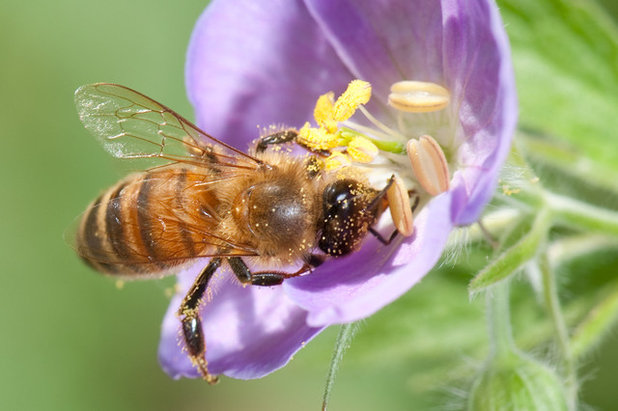
Holm Design & Consulting LLC
Here’s a honey bee (
Apis mellifera) visiting wild geranium for nectar.
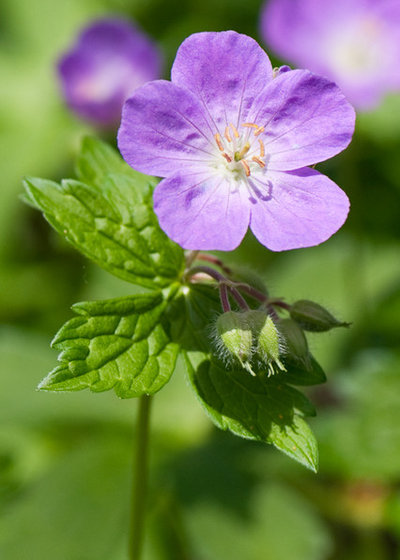
Holm Design & Consulting LLC
Botanical name: Geranium maculatum Common name: Wild geranium
Origin: Native from Manitoba, Canada, south to Oklahoma and eastward to Quebec in the north and Georgia in the south
Where it will grow: Hardy to -42 degrees Fahrenheit (USDA zones 2b to 9a; find your zone)
Water requirement: Medium to dry soil; sand to clay-loam
Light requirement: Partial sun to shade
Mature size: 1 foot to 3 feet tall and 1 foot to 2 feet wide
Benefits and tolerances: Versatile native plant; thrives in woodland openings and deep shade; extremely colorful and showy
Seasonal interest: Mounding form with large light to medium pink flowers. Long-lasting blooms and red foliage color in the fall.
When to plant: Spring or fall
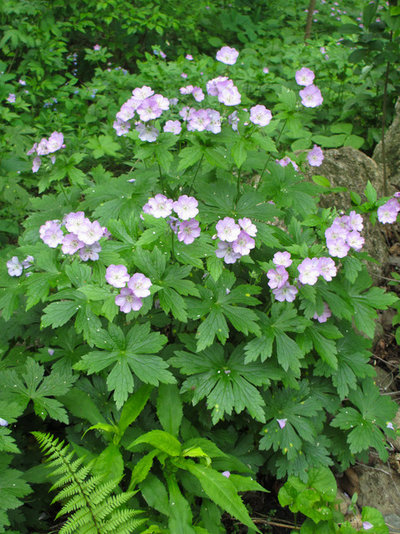
Holm Design & Consulting LLC
Distinguishing traits. In moist springs, wild geranium flowers profusely. Its deeply cut leaves contrast well with other woodland plants, including ferns, wild ginger and meadow rue. The foliage is rarely browsed by deer and rabbits.
How to use it. Wild geranium can be used in masses under trees, along woodland edges or incorporated into any shade garden. Because it flowers later than the first spring ephemerals, such as Dutchman’s breeches, it can be planted in combination with these earlier-flowering plants to help fill the void after the ephemerals go dormant.
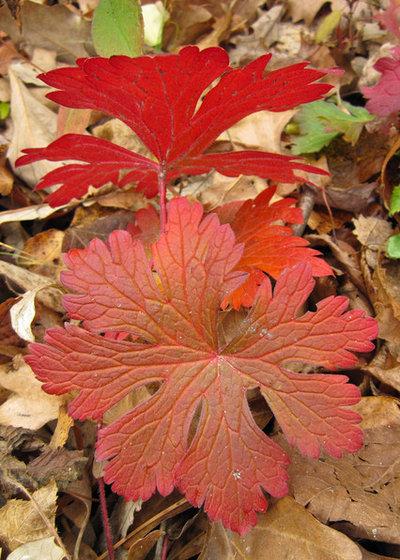
Holm Design & Consulting LLC
Planting notes. Wild geranium may seed near an established plant in your garden. The seedlings are easy to transplant and can be moved in early spring before flowering onset or in the fall. The root system is somewhat woody, so make sure you dig up the fleshy woody part as well as the accompanying roots.
Divide mature plants by cutting the plant into pieces either in early spring (April) or in the fall. Water transplants or divisions until established. No other watering will be required where the plant is native. Outside of that range, it may require additional watering. If mature plants wilt, the plants are likely situated in a spot that is too sunny and dry.
Shown: Wild geranium in fall
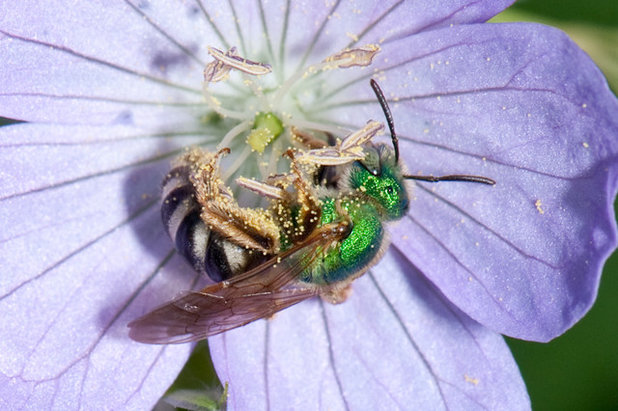
Holm Design & Consulting LLC
Pollinator notes. Wild geranium provides both nectar and pollen to visiting pollinators. Dark pink lines on the flower act as nectar guides leading pollinators to the nectaries in the center of the flower. The flowers are visited by many bees, including bumblebees (
Bombus spp), sweat bees (
Lasioglossum spp), mining bees (
Andrena spp) and honey bees (
Apis mellifera), as well as several flies.
Shown: Green sweat bee (
Agapostemon sp)





